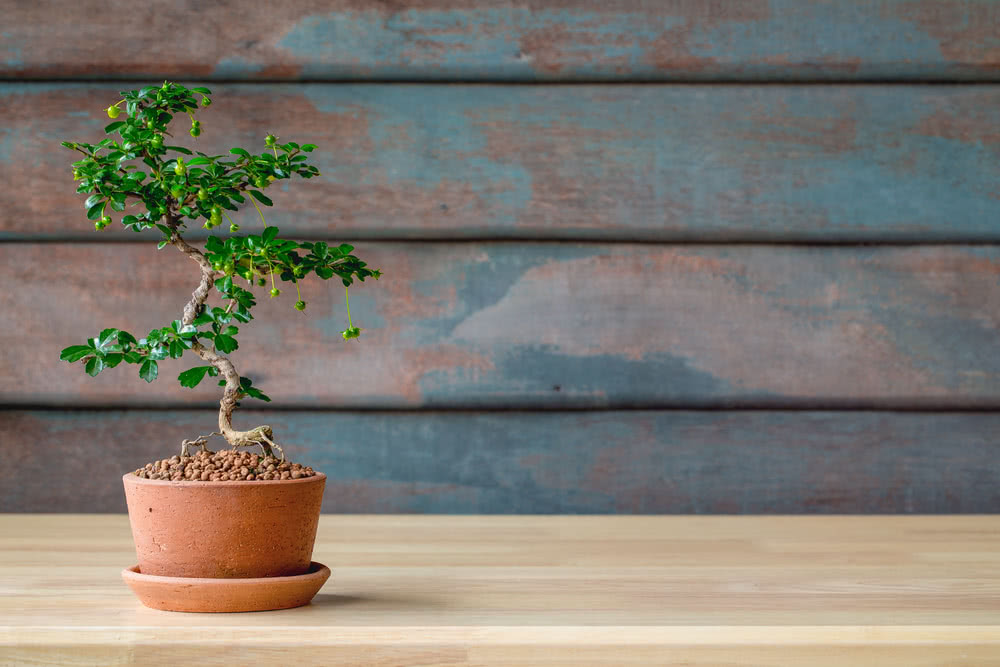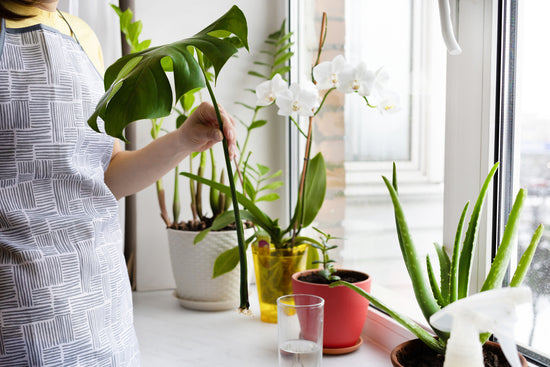
Bonsai is now being adored by everyone, particularly those living in cities, where the growing tree in a home would be a wild fantasy. It could find its place anywhere in your home be it a bedroom, living room, window-sill, veranda and other smaller places. Bonsai trees have also made their way in offices, hotels, malls and so on.

The size of Bonsai plant:
There are four group sizes in traditional Japanese classification.- Miniature bonsai- 5-15 cm
- Small Bonsai- 30 cm
- Medium Bonsai- 30-60 cm
- Large Bonsai- 60-100 cm and above

Shape/style of Bonsai plant:
Bonsai style is described with the form of the trunk at maturity. Many shapes could be possible depending on artist’s imagination, but broadly five types are more common viz.- Formal upright
- Informal upright
- Slanting
- Semi Cascade
- Cascade style

Selection of Plants for Bonsai:
Woody tree or shrub species are selected for making Bonsai. The size of leaves, flowers, fruits, trunk with branch arrangements is important considerations in choosing a particular plant. Bonsai plant raised from seeds will take a long time to train. Hence layering, cutting or grafting may be used for Bonsai preparation. Large seedlings can be obtained from nurseries.
Following are some important plants for Bonsai:
Adenium, Bottlebrush, Casuarina, Banyan tree, Ficus Benjamina, Juniper, Malphigia, Mango, Jade, Mini pine tree, Bougainvillea, Jatropha, Murraya, Sterculia, etc.
Containers for Bonsai:
A container for Bonsai must be shallow. The shape may be round, oval or rectangular. It should also have one or two drainage holes, depending on the size. Bonsai containers may be glazed or unglazed.

Soil for Bonsai:
Soil or potting mixture for Bonsai should have good water holding capacity, good drainage & balanced nutritional status. 3 parts garden soil, 3 parts compost and 2 parts of sand is one of the balanced potting mixtures for Bonsai.Potting and repotting of Bonsai:
Repotting in Bonsai is the removal of the plant either from ordinary pot or ground or old Bonsai pot and replacing the plant either first time in the Bonsai pot. It is always done in association with root pruning and modification of soil mixture.

Maintenance of Bonsai plants:
1. Pruning:
Stem pruning is done to check the growth of the plant & to encourage branches in the desired direction. Root pruning is done at the time of repotting, to train the root system to fit in a shallow container.
2. Training:
The method of training consists of tying a copper wire around the trunk or branches of the young plant and curving them in desired direction or angle.3. Watering:
Bonsai plants need frequent light watering, never letting the surface soil become dry. Spraying water onto the leaves is helpful on outdoor bonsai.
4. Feeding:
Liquid organic manure can be prepared by allowing decomposition of oil cake and cow dung in equal proportion and can be applied to the plant in diluted form, once in two weeks5. Pinching:
Leaf pinching or shoot tip pinching with scissors or with fingers is necessary for growth management of Bonsai plant.6. Plant protection:
A Bonsai plant should be kept under constant vigil and application of proper insecticides, and pesticides should be done regularly to keep off the pests and diseases.
Click To Buy - Indoor Plants for Home
Flowering Plants
Plant Bouquet










